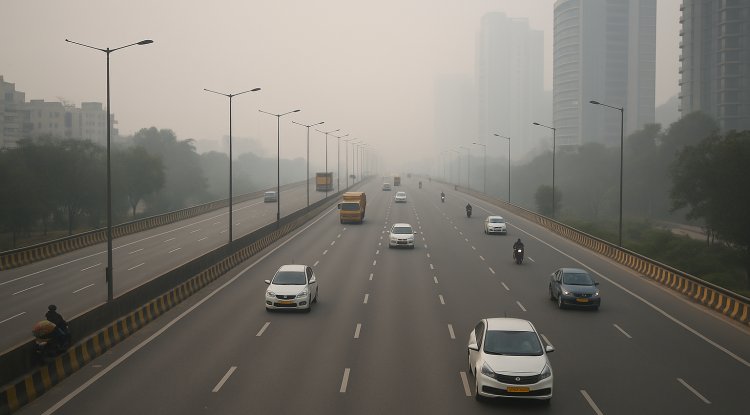Wind Energy Drives India’s Self-Reliance and Clean Energy Goals
India’s wind energy capacity reached 51.5 GW in 2025, a 150% increase in a decade, making it the third-largest renewable energy producer. Targeting 100 GW by 2030, the sector drives self-reliance through manufacturing and job creation, despite challenges in land and grid infrastructure.India’s wind energy hits 51.5 GW, up 150% in a decade, aiming for 100 GW by 2030 to drive Atma Nirbhar Bharat and net-zero goals.

India has emerged as the third-largest producer of renewable energy, with wind energy at the core of its strategy to achieve self-reliance under the Atma Nirbhar Bharat initiative. The country’s wind power capacity has reached 51.5 gigawatts (GW), reflecting a 150% growth over the past decade. This milestone, highlighted during Global Wind Day 2025, underscores India’s commitment to its 2030 target of 100 GW of wind energy and its broader goal of 500 GW of non-fossil fuel capacity, aligning with its net-zero emissions pledge by 2070.
India’s wind energy sector has seen remarkable progress, growing from 21 GW in 2014 to 51.5 GW by June 2025, a 150% increase in a decade. This achievement has positioned India as the fourth-largest in global wind power capacity and the third-largest producer of electricity from wind and solar combined, surpassing Germany in 2024. The sector’s growth is driven by strong policy reforms, increased manufacturing capacity, and investments in technology, positioning wind energy as a cornerstone of India’s clean energy transition and its ambition to become a global manufacturing hub.
The government has set an ambitious target of 100 GW of wind capacity by 2030, including 30 GW from offshore projects. To support this, the Ministry of New and Renewable Energy (MNRE) has allocated ₹26,549 crore in the 2025 budget, a 53% increase, with a significant share directed to wind energy. Key initiatives include the Viability Gap Funding (VGF) scheme, with ₹7,453 crore approved for 1 GW of offshore wind projects (500 MW each off Gujarat and Tamil Nadu). These projects aim to leverage India’s 7,600-km coastline, with 4 GW of leasing areas identified and tenders in progress.
India’s wind sector is supported by a robust manufacturing ecosystem, producing turbines ranging from 225 kW to 5.2 MW across 33 models by 14 companies. The country has an annual manufacturing capacity of 18 GW for wind turbines and components, exporting to markets like Australia, Brazil, Europe, and the USA. Major players like Suzlon, Siemens Gamesa, and Inox Wind manufacture blades, nacelles, and towers domestically, aligning with the Make in India initiative. This ecosystem supports both domestic demand and India’s potential as a global export hub, with exports contributing to economic growth.
The sector is also a significant employment generator, with the renewable energy industry employing 1.02 million people in 2023. The wind sector alone provided 40,000 jobs in 2022, with projections of a sixfold increase by 2030. Over 55% of the workforce is aged 26-35, making wind energy a key avenue for young professionals. To meet the 100 GW target, the Indian Wind Turbine Manufacturers Association (IWTMA) is investing in workforce development and technology innovation, focusing on five key areas:
- Expansion into New States: States like Madhya Pradesh, Telangana, and Odisha are being prioritized to diversify wind energy production beyond traditional hubs like Gujarat (11,317 MW), Tamil Nadu (10,603 MW), and Karnataka (1,331 MW added in 2024).
- Offshore Wind Development: Tenders for 4 GW of offshore projects in Gujarat and Tamil Nadu are underway, with potential for 70 GW nationally.
- Integration with Storage: Combining wind with battery storage to provide round-the-clock green power, addressing variability in output.
- Grid Modernization: Investments in AI-based forecasting to manage variable renewable energy and reduce curtailment losses.
- Local Manufacturing: Strengthening the supply chain for turbines and components to enhance self-reliance.
Despite this progress, challenges remain. Land acquisition issues, transmission bottlenecks, and policy hurdles have slowed wind capacity additions compared to solar, which grew from 2.82 GW to 108 GW over the same period. Only 7 GW of wind capacity was added in the last decade, compared to solar’s 180% surge. The wind sector’s capacity utilization factor (CUF) averages below 20%, against the 30% assumed in potential assessments, indicating inefficiencies. The MNRE’s shift to a single-stage, two-envelope bidding process and the reintroduction of reverse auctions in 2024 aim to address rising tariffs and streamline project allocation.
India’s wind potential is vast, estimated at 695.5 GW at 120 meters above ground level, yet only 6.5% is currently utilized. Tamil Nadu’s Muppandal Wind Farm, the largest onshore wind farm in India at 1,500 MW, exemplifies this potential. States like Gujarat, Tamil Nadu, and Karnataka lead in capacity additions, contributing 93% of India’s wind power. The government’s Wind Energy Roadmap and Manufacturing Roadmap, released in 2025, outline strategies to overcome barriers and achieve the 2030 target. These include updated micrositing guidelines to optimize turbine layouts and incentives like feed-in tariffs and interest rate rebates for repowering older turbines.
The wind sector’s growth aligns with India’s COP26 commitments, including 50% non-fossil fuel power capacity by 2030 and a 45% reduction in emissions intensity. Wind power generated 71.8 TWh in 2022-23, accounting for 4.43% of total electricity, with 70% of generation occurring during the May-September monsoon season. Integrating wind with solar and storage is critical to meeting non-solar hour demand, ensuring energy security as electricity consumption rises with AI, electric vehicles, and cooling needs.
Conclusion
India’s wind energy sector, with 51.5 GW of capacity, is central to its clean energy strategy and Atma Nirbhar Bharat vision. The push for 100 GW by 2030, backed by policy reforms and manufacturing growth, positions India as a global leader in renewables. However, overcoming land, grid, and efficiency challenges is essential to sustaining momentum and achieving net-zero by 2070.
Source: Times of India
What's Your Reaction?

















